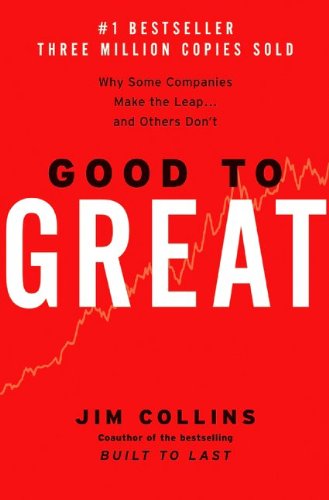
From "Good to Great: Why Some Companies Make the Leap... and Others Don't"
Strategic Discipline: Adhering to the Hedgehog Concept and 'Stop Doing'
Key Economic Insight
Sustained greatness requires fanatical adherence to the Hedgehog Concept, which involves understanding and consistently operating within the intersection of what an organization is deeply passionate about, what it can be the best in the world at, and what drives its economic engine. Pitney Bowes exemplifies this: after its postage meter monopoly ended and it incurred a 70 million dollar loss from a computer retail venture, leaders Fred Allen and George Harvey redefined the company around 'messaging' back-office services. This disciplined focus enabled Pitney to secure 45 percent of the high-end fax market for large companies and derive over half its revenues from products introduced in the previous three years, ultimately outperforming the general market by over eleven times by 1999.
A key factor in the decline of comparison companies was their lack of discipline to stay within their three circles. R. J. Reynolds, following the 1964 Surgeon General's report on cigarettes, made undisciplined diversifications, spending nearly a third of total corporate assets in 1970 to acquire a shipping container company (Sea-Land) and an oil company (Aminoil) due to a chairman's personal connection. This contrasted sharply with Philip Morris, which faced the same industry threats but redefined its Hedgehog Concept to focus on 'global brands in not-so-healthy consumables.' Consequently, a 1 dollar investment in Philip Morris from 1964 to 1989 yielded over four times the return of an investment in R. J. Reynolds.
Implementing a 'stop doing' list is crucial for strategic discipline, systematically eliminating activities that do not align with the Hedgehog Concept. Darwin Smith, CEO of Kimberly-Clark, demonstrated this by ending annual Wall Street forecasts, removing executive titles, implementing a rule requiring managers to justify at least fifteen direct reports, and exiting all paper industry trade associations to reinforce a new consumer company identity. Kimberly-Clark even completely divested its paper business to channel all resources into its emerging consumer division. This courage to make highly undiversified investments, once the Hedgehog Concept is clear, is a hallmark of companies achieving sustained great results.
📚 Continue Your Economic Learning Journey
Access the complete Good to Great: Why Some Companies Make the Leap... and Others Don't summary with audio narration, key takeaways, and actionable insights from Jim Collins.